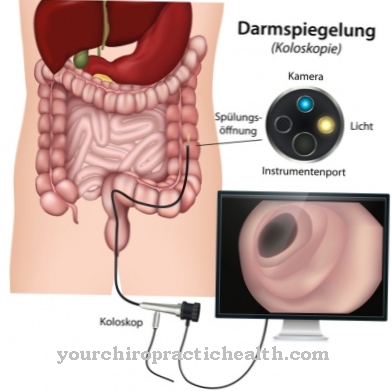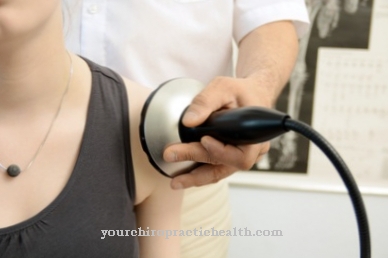The Oxygen therapy can be done in different forms. All treatment concepts are aimed at providing a patient with sufficient oxygen.
What is oxygen therapy?

As part of a medical order Oxygen therapy additional oxygen is supplied to the organism in various ways.
Oxygen therapy does not replace natural breathing, but increases the patient's oxygen supply. As a rule, oxygen therapy is suitable for treating people whose cells are only supplied with oxygen to a limited extent. The forms of medically meaningful oxygen therapy differ depending on the state of health of an affected person - a distinction must be made here, for example, between long-term or so-called multi-step treatment.
While a patient is usually supplied with oxygen for approx. 16 - 24 hours a day in the course of long-term oxygen therapy, multi-step concepts include, for example, several therapy sessions that extend over a respective period of approx. 2 hours. Oxygen can be administered for the purpose of oxygen therapy using, among other things, oxygen goggles, masks or nasal probes.
Function, effect & goals
The Oxygen therapy can be used for a variety of ailments that occur as a result of a lack of oxygen. The corresponding complaints include, for example, conditions of shortness of breath, pronounced and persistent daytime sleepiness and / or a blue discoloration of the skin or mucous membrane (in medicine the latter phenomenon is also referred to as so-called cyanosis).
Short-term oxygen therapy can also be useful after various surgical interventions - this can prevent an insufficient supply of oxygen to tissue. Possible factors that may require the use of oxygen therapy are, for example, existing functional disorders of the lungs, anemia (a lack of red blood cells responsible for transporting oxygen), restrictions in the respiratory muscles or states of shock.
One of the main goals of oxygen therapy is to enrich the inhaled air with oxygen so that the latter can enter the arterial blood. So that the necessary oxygen administration can be adapted to the individual requirements, a so-called blood gas analysis is usually carried out on the patient in advance of treatment - such an analysis can provide information about the current oxygen concentration in the blood.
If a multi-step oxygen therapy is carried out, an affected person is usually provided with vitamins and substances for vasodilation beforehand. In this way, the body's own oxygen uptake can be increased. Exercise training that accompanies oxygen therapy also serves to strengthen the organism's ability to absorb oxygen. As with multi-step oxygen therapy, long-term oxygen therapy is also mainly carried out with the help of a mask or a special probe.
In rare cases, oxygen therapy may also require a tracheal catheter. In the home environment, the oxygen required for long-term oxygen therapy is often obtained via oxygen concentrators - it is possible to leave the house for a short time with the help of an additional pressurized gas cylinder. For the purpose of oxygen therapy, very mobile patients often have a liquid oxygen system at their disposal that has a transportable tank.
You can find your medication here
➔ Medication for shortness of breath and lung problemsRisks, side effects & dangers
Carrying out a Oxygen therapy can be associated with various side effects. Long-term oxygen therapy leads, for example, to a dehydration of the nasal mucous membranes in many patients.
Such a dehydration of the mucous membrane can be prevented with the help of a gas humidifier or the use of nourishing lotions. If oxygen therapy does not take place using an oxygen-air mixture, but rather pure oxygen is supplied to the patient, therapy sessions that are too long can result in symptoms such as dizziness, headaches, nausea and / or vomiting. Therefore, a corresponding oxygen therapy using pure oxygen is usually only carried out in facilities that are equipped with emergency medical equipment.
In order to reduce general safety risks that can be associated with oxygen therapy, various rules must be observed when handling oxygen cylinders. For example, the bottles should be prevented from falling over by means of appropriate fastening. Experts also urge you to refrain from smoking in the vicinity of an oxygen cylinder, because oxygen can have a fire-accelerating effect. Bottles used for oxygen therapy should only be transported with the valve closed and protected from direct exposure to heat and sunlight.
Last but not least, if an oxygen cylinder malfunctions, it is advisable to refrain from attempting to repair it yourself.













.jpg)

.jpg)
.jpg)











.jpg)